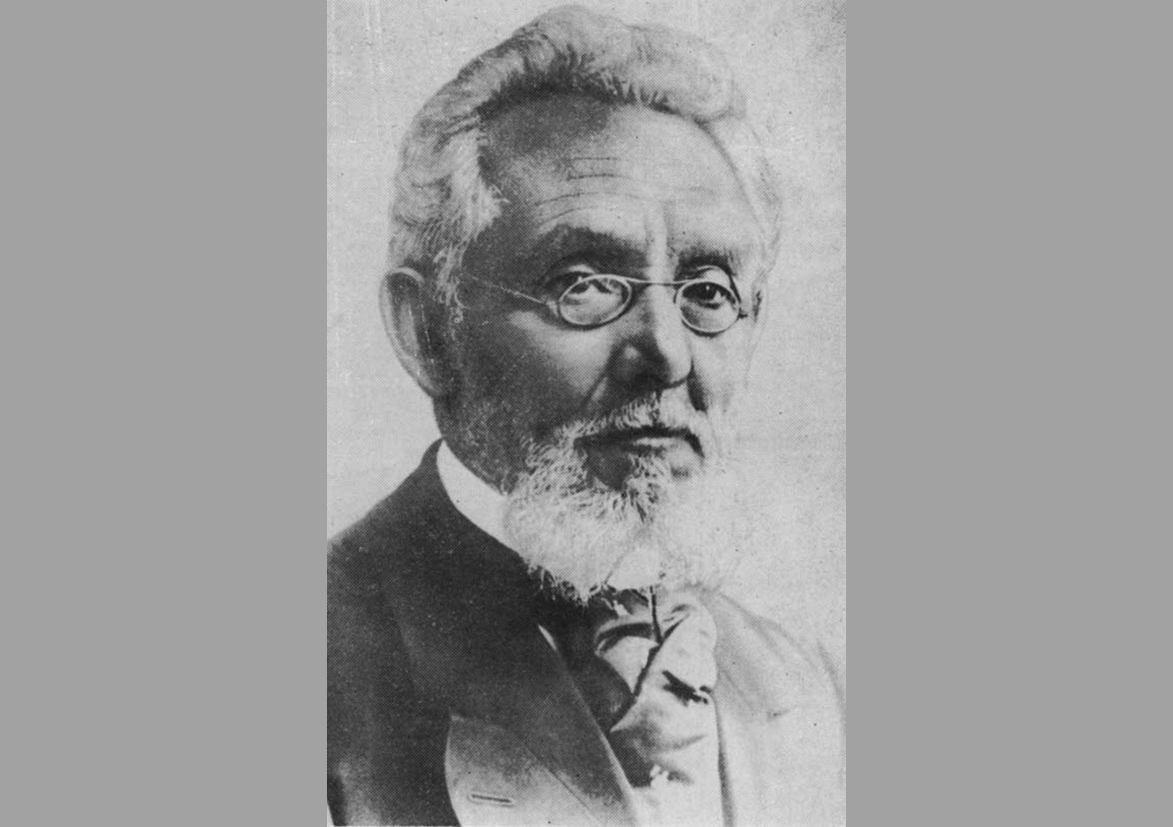The future writer was born in the town of Kopil, Slutsk district, Minsk province, into a traditional Jewish family. Like many of his peers, Sholom-Yakov received a religious education: first in the local heder, and later in the Slutsk yeshiva. According to his biographers, it was during his studies in the yeshiva that the young man's literary debuts date - poems in Hebrew, in which he glorified the local landscapes, which were inaccessible to students locked in the walls of the yeshiva.
In 1850, Sholom-Yakov's father died. His mother remarried, and the boy received the freedom he desired, or rather, the absence of close attention from his relatives. Around 1854, Sholom-Yakov met a local vagrant, Avrempl (Abraham) Kryvyi, in the Kopyla synagogue. His stories about his travels in Lithuania, Belarus, and Ukraine so captivated the young man that he joined Avrempl Kryvyi. Over the next four years, Sholom-Yakov actually walked around Volhynia and Podolia and captured images of Jewish shtetl life within the settlement zone.
It was in Podillia, in Kamianets-Podilskyi, that the young man had a significant meeting with Abraham Ber Gottlober (1811–1899), a Jewish poet, writer, and translator, as well as a public figure who was a great enthusiast for the development of Jewish secular education. Including with the help of A. B. Gottlober, Sholom-Yakov prepared to take the exam for the right to teach at the Jewish state school in Kamianets-Podilskyi. This educational institution was part of the network of state educational institutions established in 1844. The attention paid to Jewish education by the authorities of the Russian Empire was dictated by the desire to tear young people away from traditional religious education and at the same time control the activities of Jewish communities. On the other hand, in the Jewish community itself, the number of supporters of secular emancipation (the so-called “Haskala”), which was impossible without high-quality secular education, was growing. A. B. Gotlober was one of them. He helped a capable young man (no longer Sholom-Yakov, but Solomon Moiseyevich Abramovich - according to the entry in the new teacher's certificate) to obtain in 1856 the position of a teacher at a Jewish state school.
It was as a teacher that the future writer wrote his first articles devoted to the tasks of Jewish secular education, translated legal and natural science works from German into Hebrew, etc. The Hebrew-language newspaper “Ha-Magid” (“The Preacher”) served as a kind of platform for his journalism.
In 1858, S. Abramovich moved to Berdichev. It was at this time that an important event occurred not only for the young teacher, but also for Jewish literature in the Russian Empire in general. In 1860, the Hebrew-language newspaper “Ha-Melitz” (from Hebrew – “Defender”) was founded in Odessa, which, according to its founder Alexander Tsederbaum (1816–1893), was to become an intermediary between the state, supporters of Jewish cultural emancipation and religious circles of Jewish communities. A few years later, the newspaper began publishing a Yiddish-language supplement “Koyl ha-Mevasser” (from Yiddish – “The Voice that Prophecies”) for the Jewish poor, whose native language was Yiddish. Within a short time, the circulation of the supplement exceeded the figures of the Hebrew-language newspaper, and for S. Abramovich clearly demonstrated that Yiddish is the Jewish vernacular language.
In 1864, the first story of the future founder of the Yiddish-language literary tradition, Der Kleyne Menshele (The Little Man), began to appear in parts on the pages of Koil Ha-Mevasser. The work was signed with the name Mendele Moycher-Sforim (The Bookseller). Thus, the youthful love of travel and the written word were combined in the third name of the future star of Jewish literature.
Analysis of the work of M. It is difficult to fit Moikher-Sforim into the format of a small message. However, let us allow ourselves a brief and subjective assessment at the same time. Most of his works belonged to a much broader trend of the so-called populist literature, which sought, on the one hand, to show the circumstances of the life of the common people in a sufficiently realistic way, and on the other hand, to emphasize in a romantic way their (the people's) spirit, striving for liberation from the shackles of social, national and cultural enslavement. “The Little Man” (1864), “The Travels of Benjamin the Third” (1878), “Fathers and Children” (1868), “The Crooked Chip” (1869), as well as the acutely social play “Di Takse, oder Di Bande shtot ba ale toyves” (from Yiddish – “Dachshund, or the Gang of City Philanthropists”) (1869) make up a kind of literary canon of the writer, and his work in general inspires the future generation of artists of the word, including Sholem Aleichem (1859–1916). In 1869 M. Moyher-Sforim moved to Zhytomyr, and later, in 1881, to Odessa, where he headed the newly created Talmud-Torah – a religious school of the Reformist type. In fact, Odesa became the main city of life, which the author would leave only in 1905-1907 – the period of the Russian Revolution and Jewish pogroms.
The prominent Jewish writer died on December 8, 1917. Ten years later, in 1927, the All-Ukrainian Museum of Jewish Culture in Odessa was named after him. It was in the house where M. Moyher-Sforim lived for a long time. The museum managed to survive a period of closure (1934–1940) before the start of the German Soviet war, but the institution was finally destroyed during the Romanian occupation of the city.
On July 26, 2024, a square in one of the central city districts of Odessa was named in honor of the “grandfather of Jewish literature”.
Yegor Vradii

